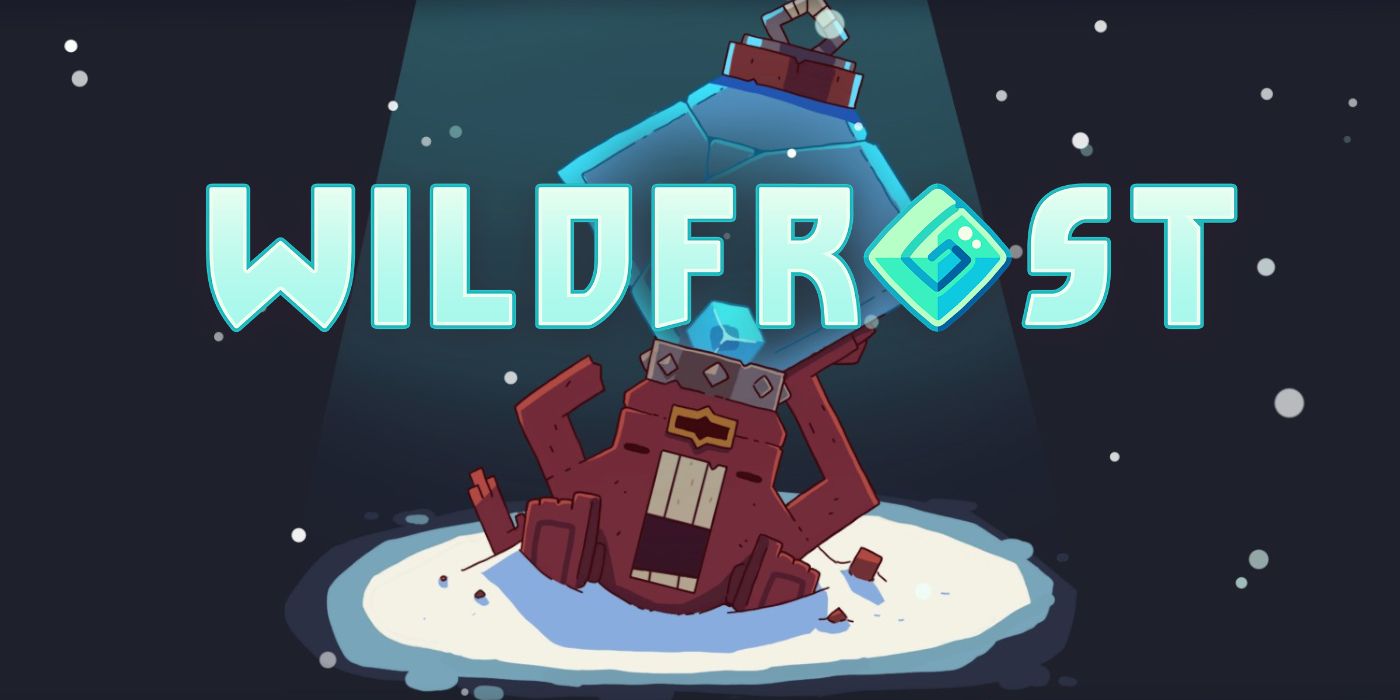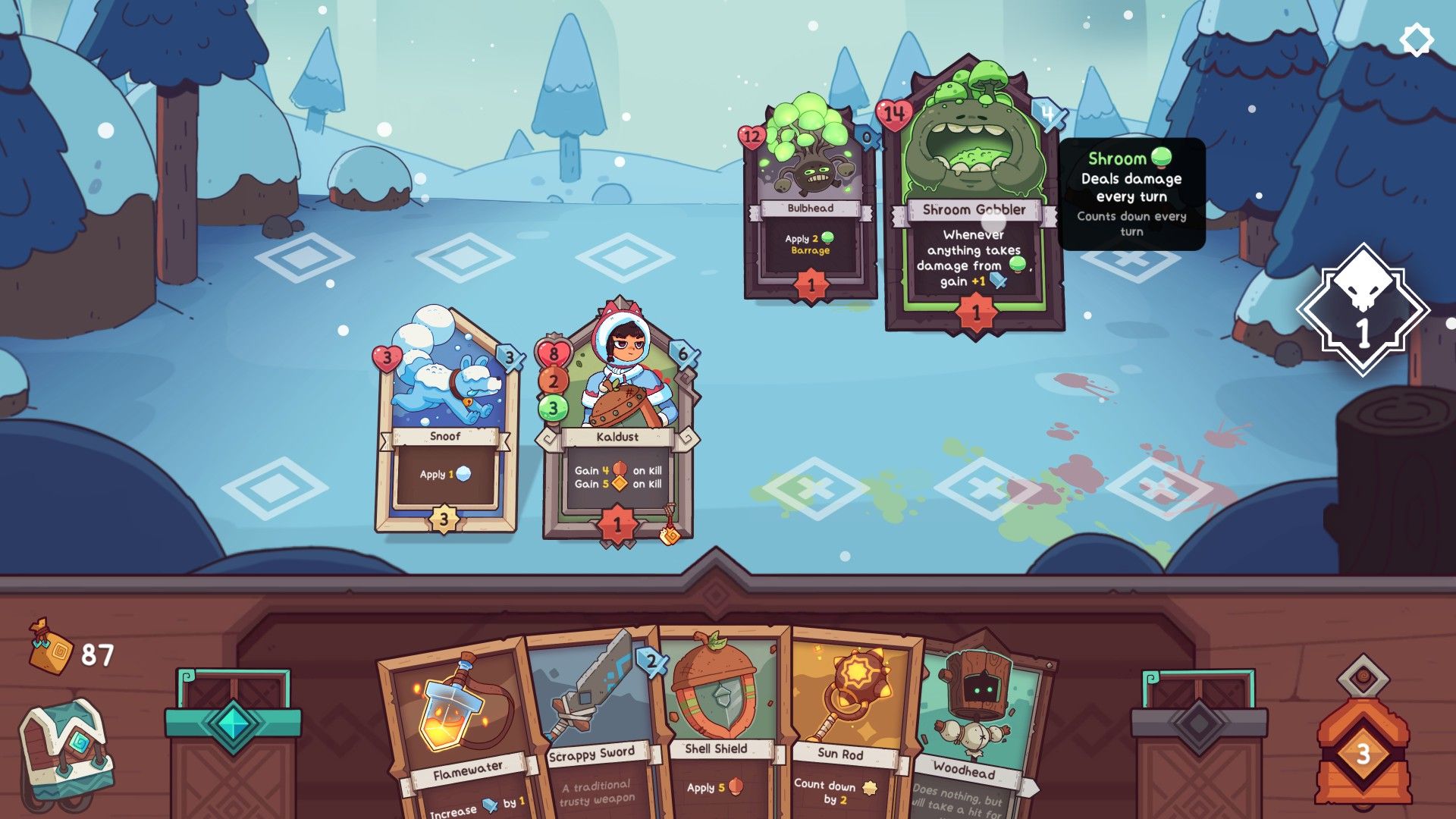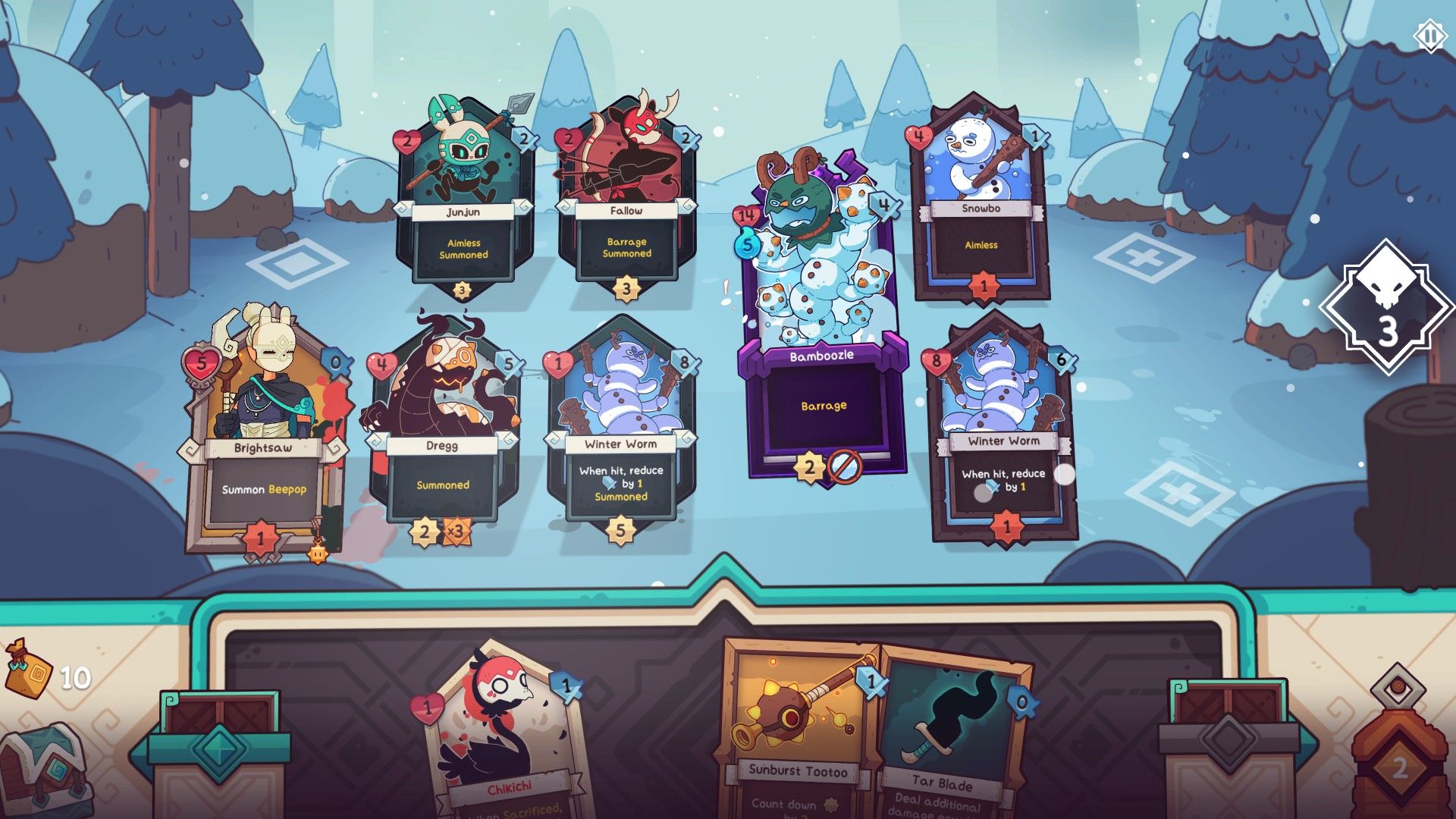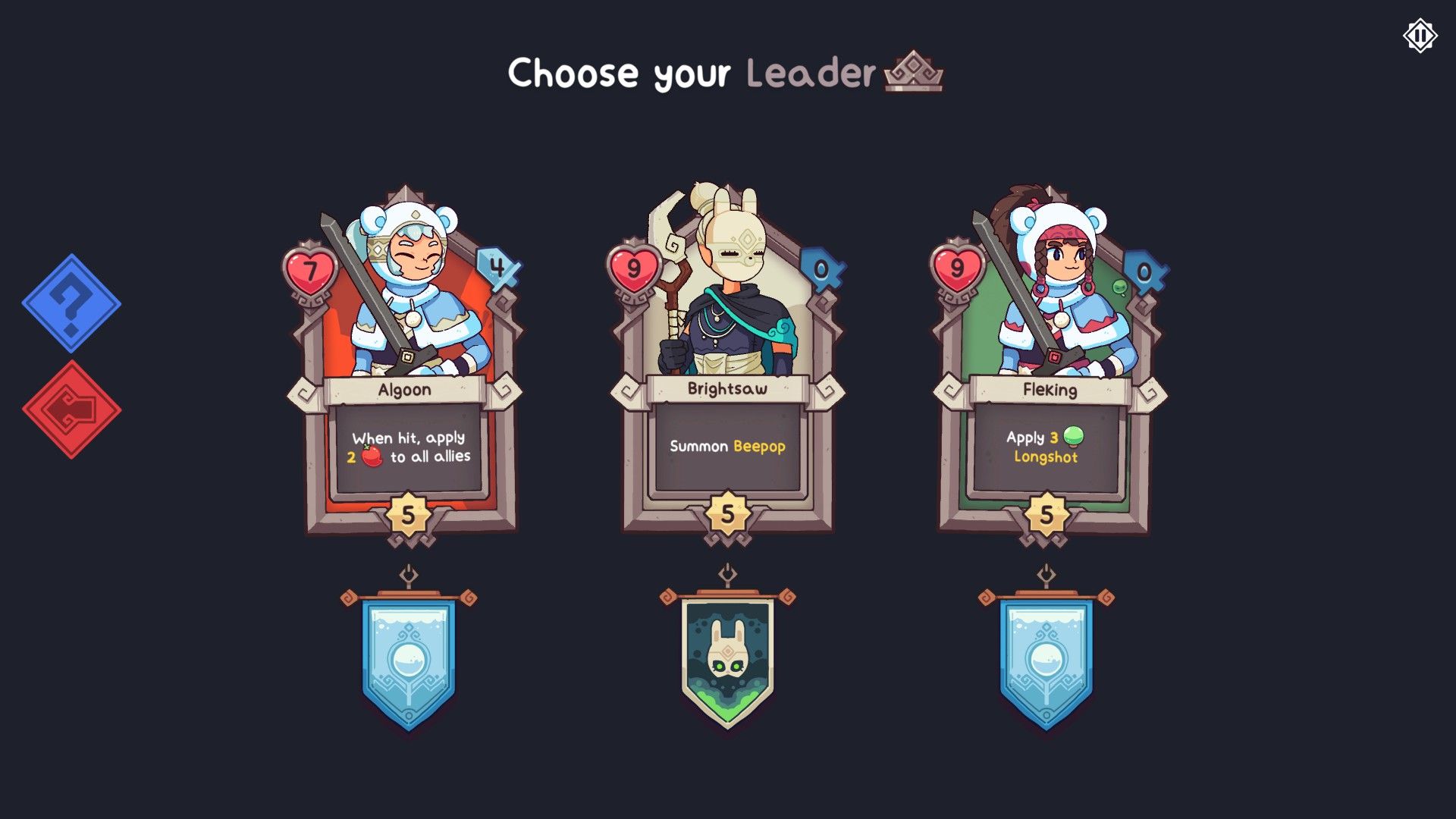Upcoming roguelite deckbuilder Wildfrost is shaping up to be a fast-paced, inviting card combat game with some emergent depth as well. In our opportunity to preview the demo before launch, it featured short breezy sessions with considerable variation, though it’s a little hard to ascertain what a complete playthrough will ultimately look like at this stage. Still, an engaging presentation and smooth UX already makes for a great first impression.
The best way to describe Wildfrost is as a combination of Monster Train’s multi-lane combat and upgradable decks and a suite of permanent town upgrades that evolve and randomize new runs. Each playthrough offers three different Leader cards to choose from, women warriors who are randomly chosen from a group of “tribes” with various base decks and mechanics. The preview build eventually offers two different tribes to play with, though at least one other tribe looks to be unlockable in the finished game.
Interestingly, one of Wildfrost’s primary gameplay quirks is the absence of energy-based mechanics, basing its flow on turns and time instead. The battlefield consists of two lanes with three positions in each, allowing a total of 12 individual character cards (six for the hero and six for the enemy). In most cases, playing a card or redrawing causes time to tick down one turn, triggering upcoming enemy waves and ticking down counter values built into each character; when a counter reaches zero, the card then attacks and/or activates a special ability like buffing shields or adding poison.
It's an interesting system to learn and grows in complexity, especially when keeping track of counters on every card in the field to predict who’s about to be knocked out in the following turn. While there are other spell cards to play in Wildfrost which can directly attack or interact with characters in the lanes, attention is usually centered squarely on the battlefield. In another interesting twist, players can always change character positions without any penalty, and can even reshuffle damaged heroes back into the deck to recover hit points.
Wildfrost might be one of the best looking deckbuilders since Monster Train, from which it sources much of its inspiration. The pace of progress through the maps, shops, and battles is always snappy; where some deckbuilders feature a “quick” setting to hasten animations and such, Wildfrost is already built this way from the ground up. As with Monster Train, maps between battles always fork into two paths with different randomized bonuses, so it’s up to the player to determine whether they’d rather add character cards, treasures, or charms to their arsenal, sacrificing any potential boons on an alternate route.
Charms represent the primary method of card modification, with attachable relics that add other qualities to cards and characters, or even raw stat upgrades. Some charms really twist up Wildfrost’s basic systems; for instance, changing how a character causes damage or adding additional attacks per turn. It’s familiar territory so far as deckbuilder upgrade systems go, but considering that starting Leaders are often so differentiated each run, better luck with charm drops can turn a relatively innocuous hero card into an OP combatant.
If anything, there’s a chance that Wildfrost’s sense of focus may put off some players, as exceptional runs are less common when compared to something like Slay the Spire. The small size of the playable arena and meager roster of heroes in a deck puts a stronger focus on tactical choices and accurate predictions of each turn. At certain times, the game even summons some comparisons to Into the Breach, in the sense of playing on a constrained close-quarters battlefield which is yet information-dense.
Wildfrost’s presentation is a major selling point which should not be understated. Featuring wintry, charmingly animated cartoon artwork by Gaziter and responsive card actions and placement, almost every corner of the game feels polished. A sampling of Wildfrost’s special design touches include: spirited battle themes which get louder and livelier after drawing first blood, multicolored battle damage which then remains on the cards themselves, and completely different card designs and playmats for each tribe.
Wildfrost is not playable in its complete form just yet, and a few concerns at emerged from the preview. The permanent upgrade system progresses fairly slowly, which might speak to an overall dearth of unlockables by game’s end. While each map route tends to reveal a good mix of boons, there isn’t any choose-your-own-adventure styled puzzles or story content, or very much narrative to speak of at all. The game’s visual design does the heavy lifting for its sense of character, but players who need a little more lore and context to get invested in their deckbuilders may not feel served by what Wildfrost is trying to do.
For the rest, though, Wildfrost looks like an indie to follow. There are enough mechanical twists to separate it from the pack and its minute-to-minute gameplay ranks among the best in its genre. If the finished product presents enough proper mix-ups to keep its roguelite runs different throughout, this could become a notable deckbuilder with tactical depth and pick-up-and-play appeal. Publisher Chucklefish hasn’t staked its claim to the deckbuilding genre until now, but Wildfrost is a mighty first showing.
Wildfrost releases this winter, and a playable demo will be featured in this year's Steam Next Fest from October 3 to 10.




